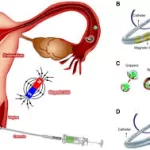In a groundbreaking study published on July 31 in Nature, researchers have uncovered the vital role of long-lived immune cells in the nose and upper airway. These immune cells are key players in protecting against viral and bacterial infections, making the nose a crucial first line of defense for the lungs.
Immune Memory in the Upper Airway
The nose and upper airway, which includes the mouth, sinuses, and throat (but not the windpipe), serve as important training grounds for immune cells. These cells can “memorize” pathogens they encounter, enabling them to mount a more effective defense against future attacks by similar microorganisms. This discovery could pave the way for the development of mucosal vaccines, administered through the nose or throat, which might be more effective than traditional muscle-injected vaccines.
Linda Wakim, an immunologist at the University of Melbourne, praised the study, stating that it demonstrates the presence of an “arsenal of immune cells capable of fighting off respiratory infections” in the upper airways of both young adults and older people.
New Insights from Nasopharyngeal Swabs
Historically, research on the immune system has focused on cells in the blood and lower airways due to their accessibility through blood draws, biopsies, and organ donations. However, the COVID-19 pandemic and the emergence of variants like Omicron, which proliferate efficiently in the upper airway, shifted this focus. Study co-author Sydney Ramirez, an infectious-disease physician and immunologist at the La Jolla Institute for Immunology, highlighted the need to understand how immune cells in the upper airways interact with pathogens and develop immune memory.
To achieve this, Ramirez and her team utilized nasopharyngeal swabs, which can reach the back of the nose. They swabbed about 30 healthy adults every month for over a year, analyzing how their immune-cell populations changed over time. The researchers discovered millions of immune cells in these samples, including those providing immune memory.
The Role of Adenoids
The study also revealed the ability to swab hard-to-reach immune organs called adenoids, located at the back of the nose. These organs analyze inhaled air and contain germinal centers, structures that serve as training camps for B cells to learn how to make effective antibodies.
Interestingly, the researchers found active germinal centers in the adenoids of participants of all ages, including adults, a finding that is “reassuring for all of us over 20 years old,” according to Ramirez. The effectiveness of these germinal centers was further evidenced by participants who contracted COVID-19 during the study, as their noses hosted B cells specializing in targeting SARS-CoV-2.
Germinal centers are typically active only during and shortly after acute infection or immunization. However, the researchers found these centers to be active even when participants did not report feeling sick. This new swabbing technique could soon help scientists understand what drives the activity of these centers and how SARS-CoV-2 infection shapes immune responses, says Donna Farber, an immunologist at Columbia University.
Implications for Vaccine Development
Farber also noted that these findings offer a “very valuable” quantitative method to measure changes in immune response post-vaccination, particularly for testing intranasal vaccine candidates. However, she cautioned that the constant activity of the immune system in the upper airways might pose a challenge, as pre-existing antibodies could block the protective effects of intranasal vaccines.
This research underscores the importance of the nose and upper airway in immune defense and opens new avenues for vaccine development, promising a more robust and targeted approach to preventing respiratory infections.










